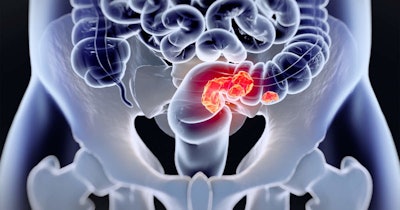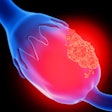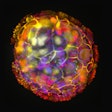
Researchers from the University of California (UC), San Diego and colleagues from Australia have engineered bacteria capable of detecting tumor DNA in live organisms, opening possibilities for biosensors that could identify not just tumors but also infections and other diseases.
The research team detailed their method of using CRISPR to engineer bacteria as a biosensor for detecting tumor DNA in an article published in Science. The technique, dubbed Cellular Assay for Targeted CRISPR-discriminated Horizontal gene transfer and known by the acronym CATCH, was designed to identify specific DNA sequences and mutations outside of cells.
While bacteria have previously been engineered to perform a number of diagnostic and therapeutic functions, they have never yet been employed to detect specific DNA sequences and mutations outside of cells. Tumors are known to shed DNA into their surrounding environments, but while methods exist that can analyze purified DNA in the lab, they have not been capable of detecting DNA where it is released.
“As we started on this project four years ago, we weren’t even sure if using bacteria as a sensor for mammalian DNA was even possible,” said researcher Jeff Hasty, a professor at the UC San Diego School of Biological Sciences and Jacobs School of Engineering. “The detection of gastrointestinal cancers and precancerous lesions is an attractive clinical opportunity to apply this invention.”
The team aimed to engineer bacteria as a biosensor to detect DNA released from colorectal tumors. They chose the bacterium Acinetobacter baylyi, as it contained the necessary elements for both taking up DNA and CRISPR analysis. They programmed A. baylyi with a CRISPR system designed to differentiate mutated from nonmutated copies of KRAS, a gene that is mutated in many cancers. Only the bacteria with the mutant KRAS would survive to signal or respond to the disease.
CATCH takes advantage of bacteria’s ability to take up DNA from their environment through horizontal gene transfer, a process used by organisms to move genetic material in a manner distinct from parent-to-offspring genetic inheritance. In the CATCH technique, horizontal gene transfer moves the DNA from the tumors into the bacteria.
“It was incredible when I saw the bacteria that had taken up the tumor DNA under the microscope. The mice with tumors grew green bacterial colonies that had acquired the ability to grow on antibiotic plates,” co-author Josephine Wright of the South Australia Health and Medical Research Institute in Adelaide said in a statement.
The research team plans to adapt its bacteria biosensor method to detect and treat a range of cancers and infections.



















